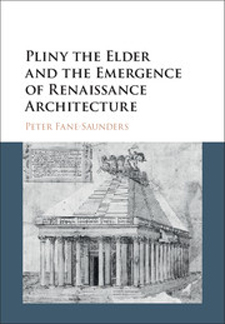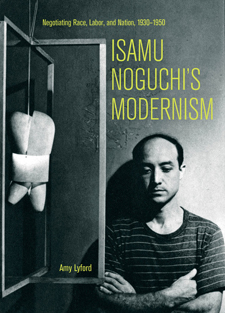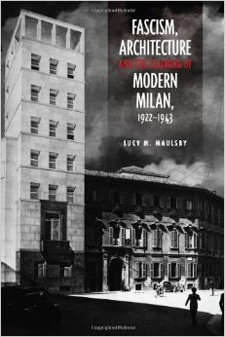CAA News Today
Artists’ Royalties Act Introduced by Nadler
posted by Linda Downs — April 29, 2015
Congressman Jerrold Nadler has reintroduced a revised bill, The American Royalties Too Act 2015, to provide royalties to visual artists whose work is resold and valued at over $5,000.
H. R. 1881
To amend title 17, United States Code, to secure the rights of visual artists to copyright, to provide for resale royalties, and for other purposes.
IN THE HOUSE OF REPRESENTATIVES
April 16, 2015
Mr. Nadler (for himself, Ms. Slaughter, Ms. Chu of California, Ms. Jackson Lee, Mr. Engel, Ms. Meng, Mr. Deutch, Ms. Schakowsky, and Mr. Pocan) introduced the following bill; which was referred to the Committee on the Judiciary
A BILL
To amend title 17, United States Code, to secure the rights of visual artists to copyright, to provide for resale royalties, and for other purposes.
Be it enacted by the Senate and House of Representatives of the United States of America in Congress assembled,
SECTION 1. Short title.
This Act may be cited as the “American Royalties Too Act of 2015”.
SEC. 2. Definitions.
Section 101 of title 17, United States Code, is amended—
(1) by inserting after the definition of “architectural work” the following:
(2) by inserting after the definition of “Pictorial, graphic, and sculptural works” the following:
(3) by inserting after the definition of “registration” the following:
(4) in the definition of “work of visual art”, by striking “A ‘work of visual art’ is—” and all that follows through “by the author.” and inserting the following: “A ‘work of visual art’ is a painting, drawing, print, sculpture, or photograph, existing either in the original embodiment or in a limited edition of 200 copies or fewer that bear the signature or other identifying mark of the author and are consecutively numbered by the author, or, in the case of a sculpture, in multiple cast, carved, or fabricated sculptures of 200 or fewer that are consecutively numbered by the author and bear the signature or other identifying mark of the author.”.
SEC. 3. Exclusive rights.
Section 106 of title 17, United States Code, is amended—
(1) by inserting “(a) In general.—” before “Subject to sections 107 through 122”;
(2) in paragraph (5), by striking “and” at the end;
(3) in paragraph (6), by striking the period at the end and inserting “; and”; and
(4) by adding at the end the following:
“(7) in the case of a work of visual art, to collect a royalty for the work if the work is sold by a person other than the author of the work for a price of not less than $5,000 as the result of an auction.
“(b) Collection of royalty.—
“(1) IN GENERAL.—The collection of a royalty under subsection (a)(7) shall be conducted in accordance with this subsection.
“(2) CALCULATION OF ROYALTY.—
“(A) IN GENERAL.—The royalty shall be an amount equal to the lesser of—
“(i) 5 percent of the price paid for the work of visual art; or
“(ii) $35,000.
“(B) ADJUSTMENT OF AMOUNT.—In 2016 and each year thereafter, the dollar amount described in subparagraph (A)(ii) shall be increased by an amount equal to the product of—
“(i) that dollar amount; and
“(ii) the cost-of-living adjustment determined under section 1(f)(3) of the Internal Revenue Code of 1986 for the year, determined by substituting ‘calender year 2016’ for ‘calendar year 1992’ in subparagraph (B) thereof.
“(3) COLLECTION OF ROYALTY.—
“(A) COLLECTION.—Not later than 90 days after the date on which the auction occurs, the entity that conducts the auction shall—
“(i) collect the royalty; and
“(ii) pay the royalty to a visual artists’ copyright collecting society.
“(B) DISTRIBUTION.—Not fewer than 4 times each year, the visual artists’ copyright collecting society shall distribute to the author or his or her successor as copyright owner an amount equal to the difference between—
“(i) the net royalty attributable to the sales of the author; and
“(ii) the reasonable administrative expenses of the collecting society as determined by regulations issued under section 701(b)(5).
“(4) FAILURE TO PAY ROYALTY.—Failure to pay a royalty provided for under this subsection shall—
“(A) constitute an infringement of copyright; and
“(B) be subject to—
“(i) the payment of statutory damages under section 504(c); and
“(ii) liability for payment of the full royalty due.
“(5) RIGHT TO COLLECT ROYALTY.—The right to collect a royalty under this subsection may not be sold, assigned, or waived except as provided in section 201.
“(6) ELIGIBILITY TO RECEIVE ROYALTY PAYMENT.—The royalty shall be paid to—
“(A) any author of a work of visual art—
“(i) who is a citizen of or domiciled in the United States;
“(ii) who is a citizen of or domiciled in a country that provides resale royalty rights; or
“(iii) whose work of visual art is first created in the United States or in a country that provides resale royalty rights; or
“(B) the successor as copyright owner of an author described in subparagraph (A).”.
SEC. 4. Notice of copyright.
Section 401 of title 17, United States Code, is amended by adding at the end the following:
“(e) Non-Applicability to works of visual art.—The provisions of this section shall not apply to a work of visual art.”.
SEC. 5. Copyright office.
Section 701(b) of title 17, United States Code, is amended by—
(1) redesignating paragraph (5) as paragraph (6); and
(2) inserting after paragraph (4) the following:
“(5) Issue regulations governing visual artists’ copyright collecting societies described in section 106, that—
“(A) establish a process by which an entity is determined to be and designated as a visual artists’ copyright collecting society, that—
“(i) requires that a visual artists’ copyright collecting society authorized to administer royalty collections and distributions under this title shall—
“(I) have prior experience in licensing the copyrights of authors of works of visual art in the United States; or
“(II) have been authorized by not fewer than 10,000 authors of works of visual art, either directly or through reciprocal agreements with foreign collecting societies, to license the rights granted under section 106; and
“(ii) prohibits an entity from being designated as a visual artists’ copyright collecting society if, during a period of not less than 5 years that begins after the date on which the entity is designated as a visual artists’ copyright collecting society, the entity does not distribute directly to each author, or to the successor as copyright owner of each author, the amount of the royalties required to be distributed under section 106(b)(3)(B);
“(B) determine a reasonable amount of administrative expenses that a visual artists’ copyright collecting society may deduct from the royalties payable to an author of a work of visual art under section 106(b)(3); and
“(C) establish a process by which—
“(i) not less frequently than annually, a visual artists’ copyright collecting society may request from any entity that conducts auctions a list of each work of visual art sold in those auctions that is by an author represented by the collecting society; and
“(ii) an author of a work of visual art may obtain from a visual artists’ copyright collecting society any information requested by the collecting society under clause (i) that relates to a sale of a work of visual art by the author, including the amount of any royalty paid to the collecting society on behalf of the author.”.
SEC. 6. Study required.
Not later than 5 years after the date of enactment of this Act, the Register of Copyrights shall—
(1) conduct a study on—
(A) the effects, if any, of the implementation of this Act, and the amendments made by this Act, on the art market in the United States; and
(B) whether the provisions of this Act, and the amendments made by this Act, should be expanded to cover dealers, galleries, or other professionals engaged in the sale of works of visual art; and
(2) submit to the Committee on the Judiciary of the Senate and the Committee on the Judiciary of the House of Representatives a report on the study described in paragraph (1), including any recommendations for legislation.
SEC. 7. Effective date.
This Act and the amendments made by this Act shall take effect on the date that is 1 year after the date of enactment of this Act.
News from the Art and Academic Worlds
posted by Christopher Howard — April 29, 2015
Each week CAA News publishes summaries of eight articles, published around the web, that CAA members may find interesting and useful in their professional and creative lives.
Next Practices in Digital
Next Practices in Digital and Technology comprises forty-one examples of recent and ongoing digital initiatives designed by AAMD member museums. From social media and mobile apps, to in-gallery interpretation and behind-the-scenes collections management, Next Practices in Digital and Technology explores the ways museums are using technology to advance accessibility, scholarship, education, and audience engagement. (Read more from the Association of Art Museum Directors.)
Dear Artists, Stop Turning in Bad Grant Applications (Part 1)
Show of hands—how many of you who’ve applied for a grant or fellowship have turned in your application on the deadline day, right before the post office closed or the website shut down, after dashing off an unspellchecked artist’s statement and recruiting friends to write your reference letters the night before? (Read more from GrantSpace.)
Dear Artists, Stop Turning in Bad Grant Applications (Part 2)
When panelists are reading through the material, this is the only impression we have of you. Often, the judging is blind and sourced from out of town. If not, and a panelist has a conflict of interest, they have to state that up front and inform the organization and withdraw themselves from the conversation about your work. So, typically your work will be reviewed and assessed by strangers. (Read more from GrantSpace.)
Time to Change the Rules of Negotiation
It is job-offer season, and lately I’ve received an inordinate number of inquiries related to “negotiating while female.” In addition to the normal jitters that come with going back and forth on an offer, it seems lots of women have heard about the Nazareth College case and read the research that suggests they must play into gender stereotypes in order to secure competitive deals. For example, they have been told that they should make requests on behalf of others rather than themselves so as not to seem pushy or aggressive. (Read more from Vitae.)
Should Art Respond to Science? On This Evidence, the Answer Is Simple: No Way
Physics—it really does your head in. That seems to be the less-than-enlightening message the Japanese visual artist and composer Ryoji Ikeda took from a residency at CERN in Geneva. Ikeda’s installation Supersymmetry, staged in the darkened uppermost level of a multistory car park, is apparently what you get when you introduce an artist to the world’s most advanced particle research institute and its renowned Large Hadron Collider: a lot of sound and light, signifying nothing. (Read more from the Guardian.)
Competing or Complementing: Art Loss Databases Proliferate
Stolen art seems to be ubiquitous and difficult to track. It is relatively easy to ship and sell around the world, and can remain easily hidden for decades. The owner faces the conflict of wanting to publicize the loss widely, while also keeping their personal lives private. The development of databases to record losses was first preceded by newsletter alerts of stolen art that proliferated in the arts community to halt sales with questionable provenance. (Read more from the Center for Art Law.)
Three Quarters of New Collectors Buy Art Online for Investment, Study Finds
Collectors who buy art online are increasingly doing it for investment, according to a report released by the fine-art insurance company Hiscox. As many as 63 percent are driven by the value potential of works of art, with 75 percent of new buyers saying they buy art for investment. However, 93 percent of respondents say they collect for passion. Robert Read, the head of fine art at Hiscox, says rapid growth in the contemporary art market, coupled with a lack of options in other markets, is enticing people to “get on the art ladder.” (Read more from the Art Newspaper.)
Tax Break Used by Investors in Flipping Art Faces Scrutiny
Introduced in the 1920s to ease the tax burden of farmers who wanted to swap property, it soon became a tool for real-estate investors flipping, say, office buildings for shopping malls. Now, this little-known provision in the tax code, known as a like-kind exchange, has become a popular tactic for a new niche of investors: buyers of high-end art who want to put off—and sometimes completely avoid—federal taxes when upgrading their Diebenkorns for Rothkos. (Read more from the New York Times.)
Support CAA’s Annual Fund
posted by Nia Page — April 27, 2015
Since 1911, the College Art Association has served the individuals and institutions that make up the world’s largest professional association in the visual arts. As you know, CAA supports and enhances the community in the visual arts through advocacy efforts; vital professional documents like CAA’s Standards and Guidelines; critical projects like the Code of Best Practices in Fair Use for the Visual Arts; prestigious publishing grants for book manuscripts; career-development resources including the Online Career Center; important new writing and scholarship published in The Art Bulletin, Art Journal, and caa.reviews; and CAA’s central forum for exchange of creative work and scholarly research at the Annual Conference.
What you may not realize is that CAA does a great deal behind the scenes to support its members. The organization subsidizes more than half of its members through discounted memberships for students, retirees, part-time faculty, and independent artists and scholars, and it provides reduced conference registration fees for student and retired members. CAA’s Strategic Plan (2015–2020) has made part-time faculty issues a priority, and the organization recently asked tenured faculty and administrators in the visual arts to implement its Guidelines for Part-Time Professional Employment. CAA has even devoted an entire website section providing resources for part-time faculty. At the conference, CAA offers Professional-Development Workshops and mentoring opportunities to artists, art historians, designers, and students at the Annual Conference. It also presents ARTspace, an annual forum of programming designed by artists for artists that is free and open to the public.
Today, I ask that you support all that CAA does with a gift to the Annual Fund.
Your contribution to the Annual Fund will enable CAA to continue providing invaluable resources to its members. Voluntary support from CAA members is critical to our collective advancement, and your contribution to the Annual Fund makes this important work possible.
On behalf of the artists, art historians, curators, critics, collectors, designers, educators, and other professionals who make up CAA, I thank you for your dedication. Please give generously!
Sincerely,
John J. Richardson
Vice President for External Affairs
CAA Salutes Its Fifty-Year Members
posted by Nia Page — April 23, 2015
CAA warmly thanks the many contributions of the following dedicated members who joined CAA in 1965 or earlier. This year, the annually published list welcomes eighteen artists, scholars, and curators whose distinguished exhibitions, publications, and teaching practices have shaped the direction and history of art over the last fifty years.
1965: Jean M. Borgatti; Norma Broude; Wanda M. Corn; Elaine K. Gazda; Diana Gisolfi; Dorothy F. Glass; Andree M. Hayum; Ellen V. Kosmer; Lillian D. MacBrayne; Jerry D. Meyer; Ann Lee Morgan; Myra N. Rosenfeld-Little; Ted E. Stebbins; Eugenia Summer; Charles Talbot; MaryJo Viola; Michele Vishny; and Wallace E. Weston.
1964: Richard J. Betts; Ruth Bowman; Vivian P. Cameron; Kathleen R. Cohen; Paula Gerson; Ronald W. Johnson; Jim M. Jordan; William M. Kloss; Rose-Carol Washton Long; Phyllis Anina Moriarty; Annie Shaver-Crandell; Judith B. Sobre; and Alan Wallach.
1963: Lilian Armstrong; Richard Brilliant; Eric G. Carlson; Vivian L. Ebersman; Francoise Forster-Hahn; Walter S. Gibson; Caroline M. Houser; Susan Koslow; E. Solomon; Lauren Soth; Richard E. Spear; Roxanna A. Sway; Athena Tacha; and Roger A. Welchans.
1962: Jo Anne Bernstein; Phyllis Braff; Jacquelyn C. Clinton; Shirley S. Crosman; Frances D. Fergusson; Gloria K. Fiero; Jaroslav Folda; Rosalind R. Grippi; Harlan H. Holladay; Seymour Howard; Alfonz Lengyel; Mary L. Maughelli; David Merrill; Francis V. O’Connor; John T. Paoletti; Aimee Brown Price; Nancy P. Sevcenko; Thomas L. Sloan; Elisabeth Stevens; Anne Betty J. Weinshenker; and William D. Wixom.
1961: Matthew Baigell; Margaret Diane David; Bowdoin Davis Jr.; David Farmer; J. D. Forbes; Isabelle Hyman; Henry A. Millon; Marion E. Roberts; and Conrad H. Ross.
1960: Shirley N. Blum; Kathleen Weil-Garris Brandt; Dan F. Howard; Eugene Kleinbauer; Edward W. Navone; Linda Nochlin; and J. J. Pollitt.
1959: Adele M. Ernstrom; Geraldine Fowle; Carol H. Krinsky; James F. O’Gorman; and Ann K. Warren.
1958: Samuel Y. Edgerton Jr.; Carla Lord; Damie Stillman; and Clare Vincent.
1957: Marcel M. Franciscono; Bruce Glaser; E. Haverkamp-Begemann; Jane Campbell Hutchison; and Susan R. McKillop.
1956: Svetlana L. Alpers; John Goelet; Joel Isaacson; and Jack J. Spector.
1955: Lola B. Gellman; Irving Lavin; and Suzanne Lewis.
1954: Franklin Hamilton Hazlehurst; Patricia Cummings Loud; Thomas J. McCormick; Jules D. Prown; Irving Sandler; and Lucy Freeman Sandler.
1953: Dorathea K. Beard; Margaret McCormick; and Jack Wasserman.
1951: Wen C. Fong.
1950: Alan M. Fern; and Marilyn J. Stokstad.
1949: Ann-Sofi Lindsten.
1947: David G. Carter; Ellen P. Conant; and Ilene H. Forsyth.
1945: James S. Ackerman.
Solo Exhibitions by Artist Members
posted by CAA — April 22, 2015
See when and where CAA members are exhibiting their art, and view images of their work.
Solo Exhibitions by Artist Members is published every two months: in February, April, June, August, October, and December. To learn more about submitting a listing, please follow the instructions on the main Member News page.
April 2015
Mid-Atlantic
Matthew Conboy. Silver Eye Center for Photography, Pittsburgh, Pennsylvania, January 16–March 21, 2015. Photography.
Kristine DeNinno. Washington Printmakers Gallery, Washington, DC, March 1–29, 2015. Monotypes – Cultural Discoveries through Color and Repetition. Monotypes.
Christopher Meerdo. Silver Eye Center for Photography, Pittsburgh, Pennsylvania, January 16–March 21, 2015. Objects in mirror are closer than they appear. Photography.
Kameelah Rasheed. Vox Populi, Philadelphia, Pennsylvania, February 6–March 1, 2015. No Instructions for Assembly, IV. Installation of self-authored texts, original photographs, and found texts, objects, and photographs.
Midwest
Les Barta. Performing Arts Center Gallery, Illinois Central College, Peoria, Illinois, March 18–April 15, 2015. Flowers and Phenomena. Photoconstructions.
Northeast
Lorna Ritz. Oxbow Gallery, Northampton, Massachusetts, April 2–26, 2015. Painting and Drawings: Lorna Ritz. Painting and drawing.
West
Les Barta. Cace Gallery, Morgan Community College, Morgan, Colorado, April 22–June 5, 2015. Flowers and Phenomena. Photoconstructions.
Ken Gonzales-Day. Luis De Jesus Los Angeles, Los Angeles, California, April 4–May 9, 2015. Run Up. Photography and film.
Hazel Antaramian Hofman. Fig Tree Gallery, Fresno, California, March 5–29, 2015. /‘ôltər/ pieces II. Painting.
News from the Art and Academic Worlds
posted by Christopher Howard — April 22, 2015
Each week CAA News publishes summaries of eight articles, published around the web, that CAA members may find interesting and useful in their professional and creative lives.
Democrats Lobby for US Artists’ Economic Rights with Two Bills
Two bills introduced in Congress aim to improve the lives of artists. One proposal seeks to bring droit de suite, also known as the artist’s resale royalty, to the United States. The other encourages artists to donate their own work to museums by allowing them to deduct the works’ fair market value from their taxes. Both bills have been proposed repeatedly in recent years but have never successfully passed into law. (Read more from the Art Newspaper.)
The Four-Hour Art Week? Read Carol Bove’s Self-Help Guide for Artists
The sculptor Carol Bove likes to play with associations and forms as she builds her assemblages of constructed and readymade objects. Time and space to experiment are crucial elements of her process, as is a certain psychological sovereignty—Bove writes that “creating a nonpurposive, free space in which to play and have fun is essential.” Here, the Brooklyn-based artist gives her best advice for finding happiness (rather than “succeeding”) as an artist, excerpted in its entirety from the new book AKADEMIE X: Lesson in Art + Life. (Read more from Artspace Magazine.)
Ten Techniques from Professional Artists for Breaking through Creative Blocks
Danielle Krysa had a successful career as a creative director for an advertising and branding agency in Canada. She was proud of her professional work but was secretly making her own art on the side. Krysa didn’t talk about her creative work with the same bravado that she approached her professional work. She rarely showed anyone what she was making and often felt a rush of jealousy when coming across the work of artists she admired. (Read more from Fast Company.)
The Art of Selling Art: Young Artists Navigate the Digital World
The art world has been slow to get online. But young artists are increasingly partnering with edgy digital start-ups to turn their creative passion into cash and reach new audiences—even if the big bucks are elsewhere. Nevertheless, online art sales are steadily growing, with 2.5 billion euros in revenue in 2013, according to the annual report of the European Fine Art Fair. (Read more from Deutsche Welle.)
Are Algorithms Conceptual Art’s Next Frontier?
In recent years, algorithms have been telling us what music to listen to, who we should date, what stocks we should buy, and even what we should eat. It comes as no surprise, then, that it should also tell us what art we should view. But what happens when the art we are looking at becomes the algorithm itself? (Read more from Artsy.)
There’s a Game for That: Teaching Art History with “Reacting to the Past”
When faculty facilitate involvement in activities such as simulations and games, and when students work collaboratively through role play and debate, deeper learning and transfer occurs. As part of my efforts to include more active and student-centered learning opportunities into my courses and to encourage knowledge, skills, and attitudes that support higher-order thinking tasks such as analysis, synthesis, and evaluation, I added a “Reacting to the Past” role-playing game to my introductory-level art-history course. (Read more from Art History Teaching Resources.)
Soap, Chocolate, and Dung—How to Preserve Materials Not Built to Last
Dung, soap, chocolate, plants, blood, hair, urine, light bulbs, petroleum, smoke, animals, and more beauty, hygiene, and medical products than you can find in most chemists: artists have explored an unprecedented range of materials and technologies since the start of the twentieth century. Many are untested for longevity, and others are ticking timebombs where deterioration is concerned. (Read more from the Art Newspaper.)
The Future of Museums Is Reaching Way beyond Their Walls
The American Museum of Natural History has always been one of the most popular destinations in New York. Even with this influx of people coming to its doorstep, the museum is equally focused on drawing a crowd beyond its campus. The museum today is a sprawling outreach institution that is using apps, social media, and educational programs to slowly grow its reach. (Read more from Fast Company.)
Mellon Foundation Helps CAA Continue Publishing Award for Emerging Scholars
posted by Christopher Howard — April 21, 2015
The Andrew W. Mellon Foundation has awarded a second grant of $60,000 to the College Art Association (CAA) to administer the Meiss/Mellon Author’s Book Award for one year. The award was first given to CAA in 2013 as a temporary measure to provide financial relief to early-career scholars in art history and visual studies who are responsible for paying for rights and permissions for images in their publications. The Meiss/Mellon Author’s Book Award will provide grants directly to emerging scholars to offset the costs of securing images for their first books. Recipients will be selected on the basis of the quality and financial need of their project, and awards will be made twice during the year (in the summer and fall). CAA anticipates awarding between ten and twelve Meiss/Mellon Author’s Book Awards in 2015.
Scholars may submit applications for the summer round of the Meiss/Mellon Author’s Book Award before the June 12, 2015 deadline. The fall deadline is September 15, 2015. CAA will administer the Meiss/Mellon Author’s Book Award according to guidelines developed for the Millard Meiss Publication Fund grant, an award established in 1975 by a generous bequest from the late Professor Millard Meiss. The jury for the award, comprising distinguished, mid-career or senior scholars whose specializations cover a broad range of art scholarship, has discretion over the number of and size of the awards. For further information about the award and to apply, please visit www.collegeart.org/meissmellon.
CAA seeks to alleviate high reproductions rights costs related to publishing in the arts. With funding from a separate, generous grant from the Andrew W. Mellon Foundation and a start-up grant from the Samuel H. Kress Foundation, CAA recently published its Code of Best Practices in Fair Use for the Visual Arts. Part of a multi-year effort led by Patricia Aufderheide and Peter Jaszi, the Code presents a set of principles addressing best practices in the fair use of copyrighted materials based on a consensus of opinion developed through discussions with visual-arts professionals.
For specific questions about applying to the Meiss/Mellon Author’s Book Award, please contact Sarah Zabrodski, CAA editorial manager, at szabrodski@collegeart.org or 212-392-4424.
People in the News
posted by CAA — April 17, 2015
People in the News lists new hires, positions, and promotions in three sections: Academe, Museums and Galleries, and Organizations and Publications.
The section is published every two months: in February, April, June, August, October, and December. To learn more about submitting a listing, please follow the instructions on the main Member News page.
April 2015
Academe
Raymond Allen, a painter, professor, and longtime vice president of academic affairs and provost at Maryland Institute College of Art in Baltimore, will retire in June 2015.
Leslie Bellavance, currently dean, director of graduate programs, and professor in the School of Art and Design at Alfred University’s New York State College of Ceramics, has been named president of Kendall College of Art and Design at Ferris State University in Big Rapids, Michigan. Her appointment begins on July 1, 2015.
Susan Best has become convenor of fine art and art theory in the Queensland College of Art at Griffith University in South Brisbane, Australia.
David Bogen, currently vice president academic and provost at Emily Carr University of Art and Design in Vancouver, British Columbia, has been appointed provost and vice president of academic affairs at Maryland Institute College of Art in Baltimore, effective August 2015.
Tanya Sheehan, associate professor of art at Colby College in Waterville, Maine, has earned tenure at her school.
Museums and Galleries
Margaret C. Conrads, formerly deputy director of art and research at the Amon Carter Museum of American Art in Fort Worth, Texas, has been appointed director of curatorial affairs at the Crystal Bridges Museum of American Art in Bentonville, Arkansas.
Anne Hawley, director of the Isabella Stewart Gardner Museum in Boston, Massachussetts, has announced her retirement after twenty-five years of service. She will step down at the end of 2015.
Katherine Jentleson, a doctoral candidate in art history at Duke University in Durham, North Carolina, has been appointed the inaugural Merrie and Dan Boone Curator of Folk and Self-Taught Art at the High Museum of Art in Atlanta, Georgia.
David Joselit, distinguished professor of art history at the Graduate Center, City University of New York, has joined the board of directors of Artists Space in Manhattan.
Narayan Khandekar, senior conservation scientist in the Harvard Art Museums’ Straus Center for Conservation and Technical Studies in Cambridge, Massachusetts, has become the center’s director.
Thomas Kren, associate director for collections at the J. Paul Getty Museum in Los Angeles, California, will retire from his position in October 2015.
Kate Kunau, a doctoral candidate in the School of Art and Art History at the University of Iowa in Iowa City, has become associate curator at the Cedar Rapids Museum of Art in Cedar Rapids, Iowa.
Jeongho Park, formerly Anne L. Poulet Curatorial Fellow at the Frick Collection in New York, has become curatorial research associate for the Department of Prints and Drawings at the Blanton Museum of Art, part of the University of Texas at Austin.
Lowery Stokes Sims, chief curator of the Museum of Arts and Design in New York, has retired from the museum.
David Stark, previously director of administration for museum education at the Art Institute of Chicago in Illinois, has been appointed chief curator of the Columbus Museum of Art in Ohio.
Michael Taylor has left his position as director of Dartmouth University’s Hood Museum of Art in Hanover, New Hampshire.
Daniel H. Weiss, an art historian and president of Haverford College in Haverford, Pennsylvania, has been named president of the board of trustees at the Metropolitan Museum of Art in New York.
Chris Yates, formerly director of CORE Studio and associate professor of art at the Columbus College of Art and Design in Ohio, has become assistant director of Gund Gallery at Kenyon College in Gambier, Ohio.
Organizations and Publications
Michael Conforti, director of the Sterling and Francine Clark Art Institute in Williamstown, Massachusetts, has announced his retirement. He will leave the institute in summer 2015.
Joni Doherty, formerly director of the New England Center for Civic Life at Franklin Pierce University in Rindge, New Hampshire, has accepted a position as program officer for the Kettering Foundation in Dayton, Ohio.
Institutional News
posted by CAA — April 17, 2015
Read about the latest news from institutional members.
Institutional News is published every two months: in February, April, June, August, October, and December. To learn more about submitting a listing, please follow the instructions on the main Member News page.
April 2015
The Baltimore Museum of Art in Maryland has received a $300,000 grant from the Henry Luce Fund in American Art to help support the exhibition Matisse/Diebenkorn and its catalogue.
The Bowdoin College Museum of Art in Brunswick, Maine, has accepted a $150,000 grant from the Henry Luce Fund in American Art in support of the exhibition This Is a Portrait If I Say So: Reimagining Representation in American Art and its catalogue.
The Sterling and Francine Clark Art Institute in Williamstown, Massachusetts, has accepted a $15 million gift from Felda and Dena Hardymon to support campus expansion and programs. In recognition of the donation, the institute’s board decided to name the director’s position after the couple.
The Huntington Library, Art Collections, and Botanical Gardens in San Marino, California, has received a $200,000 grant from the Henry Luce Fund in American Art. The institution will use the funds to reinstall and publish on its collection of American art.
The Museum of Modern Art in New York has earmarked a $350,000 grant from the Henry Luce Fund in American Art for the exhibition Donald Judd and its accompanying catalogue.
The New York Studio School in Manhattan has accepted a $30,000 grant from the Henry Luce Fund in American Art to help digitize part of its lecture program archive.
The Smithsonian American Art Museum in Washington, DC, has won a two-year $275,000 grant from the Henry Luce Fund in American Art to reinstall and reinterpret the Renwick Gallery’s American craft and decorative art collection.
The Walker Art Center in Minneapolis, Minneapolis has received a $200,000 grant from the Henry Luce Fund in American Art to help produce the exhibition International Pop and its catalogue.
The Yale University Art Gallery in New Haven, Connecticut, has won a three-year grant of $1.5 million from the Henry Luce Fund in American Art. The museum will use the funds for the open storage of its American art collection and archives in the new West Campus Collection Studies Center.
Grants, Awards, and Honors
posted by CAA — April 15, 2015
CAA recognizes its members for their professional achievements, be it a grant, fellowship, residency, book prize, honorary degree, or related award.
Grants, Awards, and Honors is published every two months: in February, April, June, August, October, and December. To learn more about submitting a listing, please follow the instructions on the main Member News page.
April 2015
Molly Emma Aitken-Zaidi, an independent scholar, has accepted a 2014 Summer Stipend from the National Endowment for the Humanities. Her project is entitled “The Connoisseurship of Longing and India’s Mughal Emperors during the 16th and 17th Centuries.”
Patricia Blessing, international and scholarship program officer for the Stanford Humanities Center at Stanford University in California, has won the 2014 H. Allen Brooks Travelling Fellowship from the Society of Architectural Historians.
Kirsten Pai Buick, associate professor of art history at the University of New Mexico in Albuquerque, has been named the 2015 recipient of the David C. Driskell Prize by the High Museum of Art.
Jennifer Cohen, a doctoral candidate in the Department of Art History at the University of Chicago in Illinois, has been selected to be a visiting scholar at the Smithsonian Institution’s Archives of American Art by the Dedalus Foundation to conduct new research on Robert Motherwell and his contemporaries in honor of Motherwell’s centenary.
Shlomit Dror, a curator based in Jersey City, New Jersey, has completed a curatorial residency with the Brooklyn-based organization Residency Unlimited. Her residency term was February to April 2015.
Peter Fane-Saunders has received a 2014 SAH/Mellon Author Award from the Society for Architectural Historians for Pliny the Elder and the Emergence of Renaissance Architecture, his forthcoming book from Cambridge University Press.
Gregory Gilbert from the Department of Art and Art History at Knox College in Galesburg, Illinois, has been selected as a visiting scholar at the Smithsonian Institution’s Archives of American Art by the Dedalus Foundation to conduct new research on Robert Motherwell and his contemporaries in honor of Motherwell’s centenary.
Alice Ming Wai Jim, associate professor and graduate-program director in the Department of Art History at Concordia University in Montreal, Quebec, has been named the recipient of the Artexte Prize for Research in Contemporary Art.
Amy Lyford, professor of art history and associate dean of arts and humanities at Occidental College in Los Angeles, California, has won the Smithsonian American Art Museum’s 2015 Charles C. Eldredge Prize for her book Isamu Noguchi’s Modernism: Negotiating Race, Labor, and Nation, 1930–1950.
Lucy M. Maulsby has accepted a 2014 SAH/Mellon Author Award from the Society for Architectural Historians for her book Fascism, Architecture, and the Claiming of Modern Milan, 1922–1943, published the University of Toronto Press in 2014.
Kent Minturn from the Department of Art History and Archaeology at Columbia University in New York has been named a visiting scholar at the Archives of American Art by the Dedalus Foundation to conduct new research on Robert Motherwell and his contemporaries in honor of Motherwell’s centenary.
Adele Edelen Nelson of Temple University in Philadelphia, Pennsylvania, has received a 2014 Summer Stipend from the National Endowment for the Humanities. Her project is entitled “The Emergence of Abstract Art in Postwar Brazil.”
Tanya Sheehan, associate professor in the Department of Art at Colby College in Waterville, Maine, has been awarded the 2014 Patricia and Phillip Frost Essay Award for her article, “Confronting Taboo: Photography and the Art of Jacob Lawrence,” which appeared in the fall 2014 issue of the journal American Art.
Christina Weyl, a doctoral candidate at Rutgers University in New Brunswick, New Jersey, has received the 2014 Archives of American Art Graduate Research Essay Prize, funded by the Dedalus Foundation, for her online essay, “Networks of Abstraction: Postwar Printmaking and Women Artists of Atelier 17.”





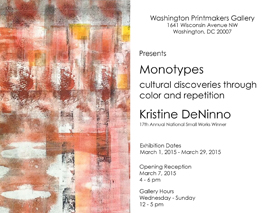 Invitation card for Kristine DeNinno’s exhibition at Washington Printmakers Gallery
Invitation card for Kristine DeNinno’s exhibition at Washington Printmakers Gallery
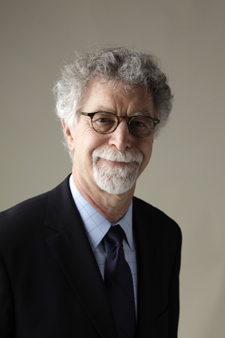 Raymond Allen
Raymond Allen
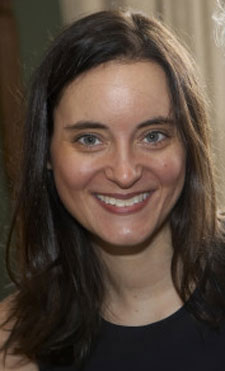 Tanya Sheehan
Tanya Sheehan
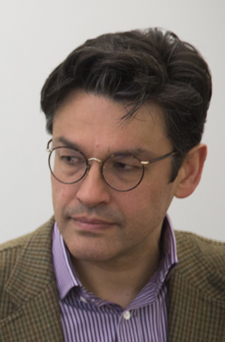 Narayan Khandekar (photograph provided by Harvard Art Museums
Narayan Khandekar (photograph provided by Harvard Art Museums
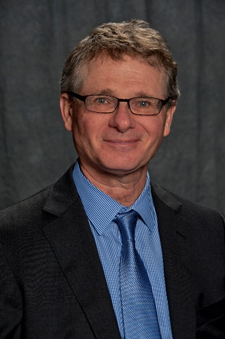 Thomas Kren
Thomas Kren
